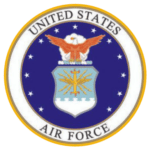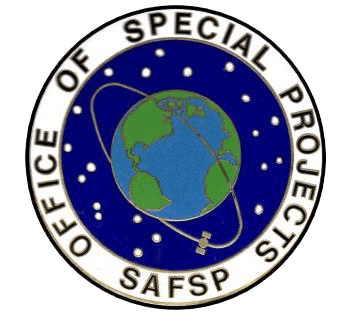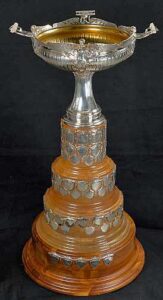PREFACE
This “Virtual Museum” portion of the website will take the reader on an educational journey on the role of an Air Force unit (SECRETARY OF THE AIR FORCE SPECIAL PROJECTS) instrumental in providing the National Command Authority with space-based image information – aka IMINT – about our adversaries. Depending on the reader’s desire to learn at a high-level or drill down into the technology involved, you can dive as deep as you want. Imagine yourself walking through a museum and picking the route you want to take. We suggest you first read the content below to provide you the basis for continuing. We will provide an increasingly technical presentation of the components of CORONA, GAMBIT AND HEXAGON. This will include NRO released YouTubes. It will take time to get approval to release this information; check back to the Virtual Museum page as we add content.
OVERVIEW
Welcome to the Virtual Museum. In text and videos, we tell the incredible story of US ingenuity in secretly developing the world’s finest satellites to confront the Soviet Union in the Cold War.
The end of World War II marked the beginning of the Cold War between the United States and the Soviet Union. An Iron Curtain was lowered between the two countries. As the military strength of both countries grew, it became increasingly difficult to know the extent to which the Soviet Union could deploy forces against the United States and our allies. In particular, President Eisenhower needed to know more about the state of Soviet weapons development, how they would deploy weapons that could be used against us, their industrial strength for supporting their military, creation of tactical maps, and other strategic indicators such as agricultural resources. Years later, the intelligence gathered allowed President Richard Nixon to negotiate the SALT (Strategic Arms Limitations Treaty) from a position of strength. We knew the number of bombers and ICBM’s they had. There was no “bomber or missile gap.” Later, during the missile reduction talks, President Ronald Reagon could claim we would “trust but verify.”
In the early 1960’s, the Department of Defense created two new organizations – both in secret – to respond to the Soviet threat. In 1960, within the Department of the Air Force, the Secretary of the Air Force created the clandestine Office of Special Projects, referred to as SAFSP or SP. A year later, the Department of Defense (DoD) formed another clandestine office, the National Reconnaissance Office (NRO), an umbrella organization of men and women from the Air Force, the CIA and the Navy to coordinate strategic intelligence across the DoD. These organizations spied on the Russians and other adversaries through the Cold War (1960-1990).
We will present the stories behind this brief overview. We will not cover programs that have not been declassified. All of the content in the Virtual Museum has been reviewed and is unclassified. Later in the website, you can go study the various technologies used to accomplish the successful space missions to answer Ike’s goals. Several programs were tried before Weapon System 117L was undertaken. This was the development of space-based reconnaissance systems. The CIA was tasked with delivering results. Signals Intelligence (SIGINT) satellites were launched by the Naval Research Laboratory. Some related intelligence-gathering efforts of early the early programs were: GENETRIX – high-altitude balloons with cameras sent over the Soviet Union; SAMOS – An attempt at satellite-based film capture and digital readout; GRAB; POPPY; and the U-2, A-12 and SR-71 reconnaissance aircraft. Our main focus is on the three film-based satellites: CORONA, GAMBIT AND HEXAGON.
This Virtual Museum recognizes the accomplishments of the Air Force organization, SAFSP. Industry and SP teams developed satellites, tracking stations, communication systems and utilized enhanced cargo planes to catch recovery vehicles carrying exposed film of denied areas. SP worked closely with the Intelligence Community. While some of these programs are still classified, three of the imagery satellites, CORONA, GAMBIT and HEXAGON and a few of the electronic signals collection satellites have been revealed since 2011.
SP’s many accomplishments can best be appreciated by understanding the national threat faced by the United States back in those days, and the incredible technology employed to meet it. The satellites on display at the National Museum of the Air Force in Dayton, Ohio, stand in grateful recognition of the men and women who selflessly fought the Cold War, in silence – from above. As you tour this Virtual Museum, you will see some of the now-unclassified YouTube highlights of SP’s challenges and accomplishments.
HISTORY OF THE NRO
The National Reconnaissance Office (NRO) was the executive agency directing all satellite reconnaissance projects. The Secretary of the Air Force Special Projects Office (SP) was heavily involved in the implementation of the design, manufacture, test, launch, operation and product delivery to the appropriate intelligence analysis facilities.
These satellites were commanded and controlled via a satellite control network of ground stations distributed around the world. The Satellite Control Facility (SCF) was the central organization that generated the instructions that controlled the function of all satellites. It was comprised of the Satellite Test Center, Mission Control Complexes & Command Generation at Sunnyvale Air Force Station,(later called Onizuka AFS) CA, the six Remote Tracking Stations around the world and the recovery vehicle aircraft based at Hickam AFB, HI. Sunnyvale was home to the iconic “Blue Cube” – a 100-ft tall windowless secure building that housed many classified programs. The iconic structure in Silicon Valley only had four floors – with space for cooling systems and cabling feeding many CDC 3800 mainframe computers.
Signals Intelligence (SIGINT) satellite systems illustrate both the mission objective and the covert nature of technology. The country could now detect Soviet radar better than our land-based systems. The first of these eavesdropping satellites was a Navy program called Galactic Radiation and Background (GRAB). It was the predecessor of more sophisticated satellites put into orbit by the NRO/SP team. Many are still classified.
The CORONA vehicle is on display at the Smithsonian Air & Space Museum. The National Museum of the Air Force in Dayton, OH displays actual development vehicles of the HEXAGON & GAMBIT. This affords a unique opportunity to witness history kept secret from the public for over 50 years. Click . (wait for YouTube to load).
To begin your education – choose the topic of choice below. Then return to this page to read the rest of the information. The YouTube videos were produced and approved by the NRO.



